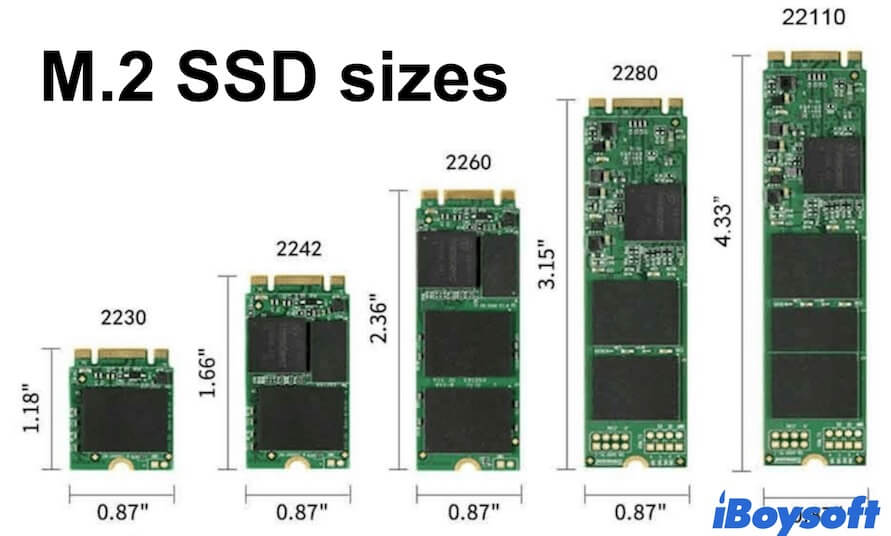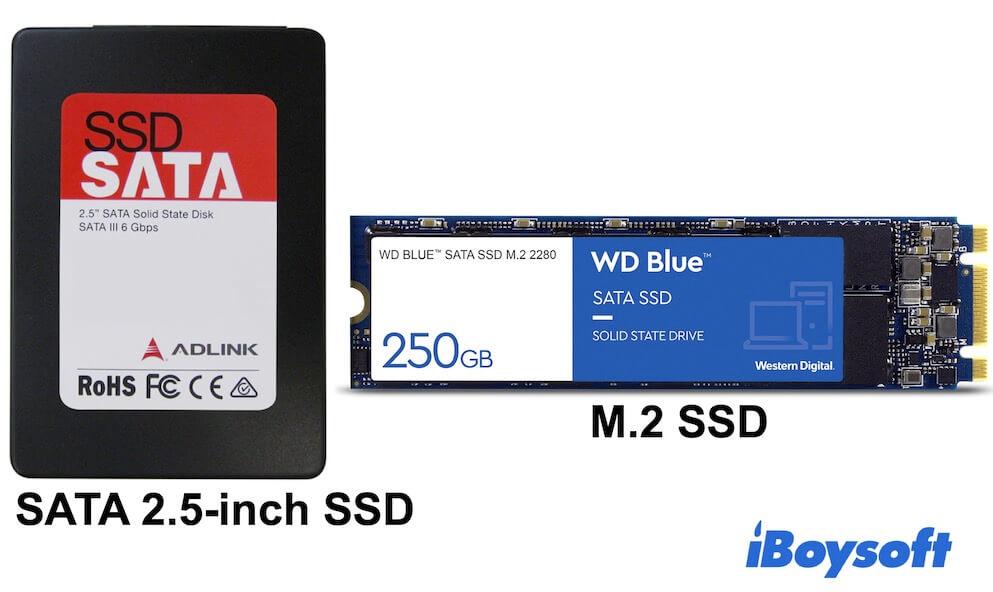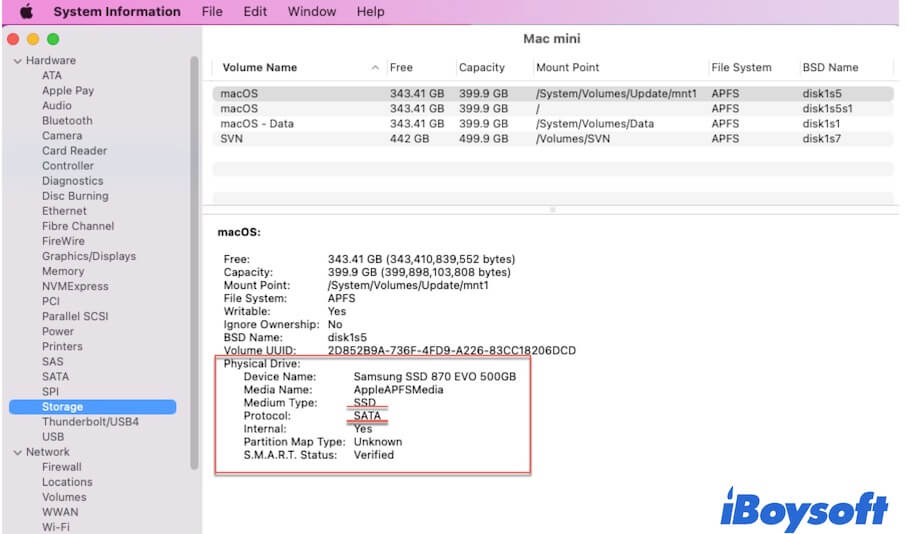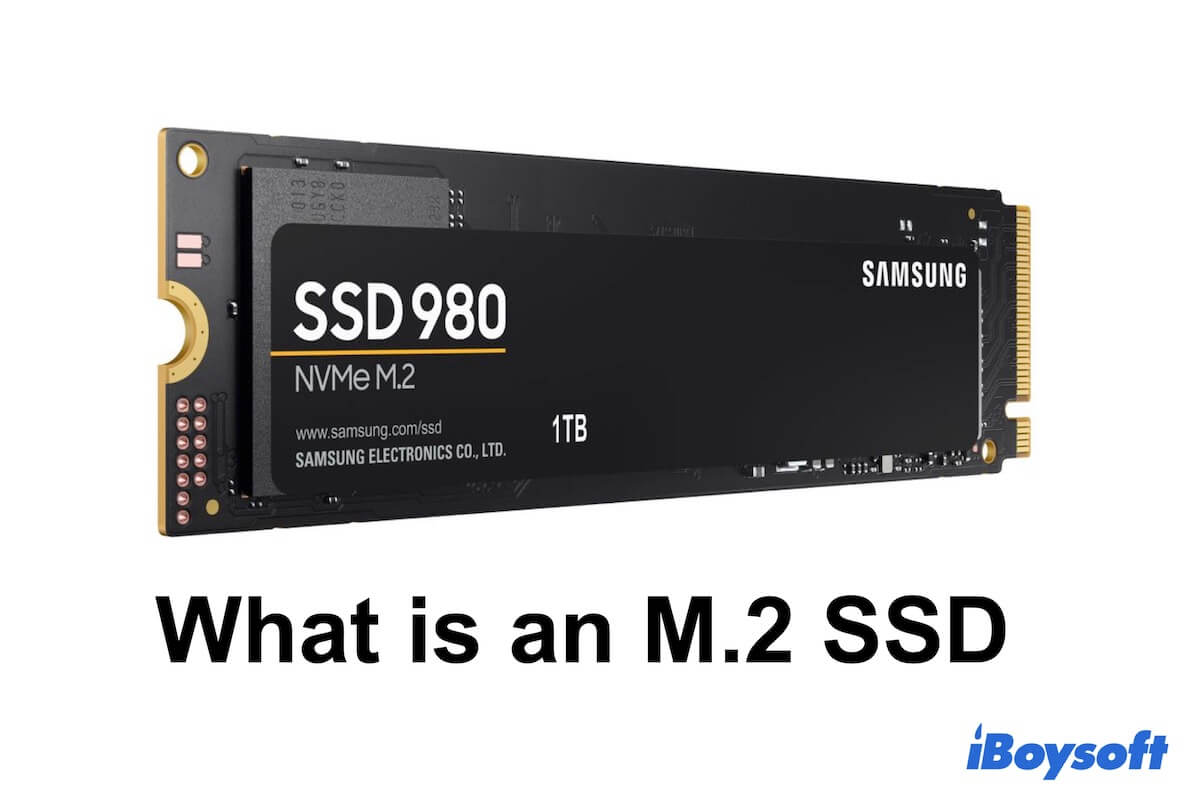Nowadays, there are types of hard drives for you to choose from. Especially for those who need a hard drive for specific use like gaming, creating a bootable installer, or so. You might have heard of M.2 SSD from some source but know nothing more about it. Follow this complete guide to learn everything about M.2 SSD.
What is an M.2 SSD?
Introduced by Intel in 2012, an M.2 SSD is a new type of SSD (solid-state drive) that shapes like a stick of gum. This small form factor of SSD is a specification that can be directly plugged into the motherboard of a computer. It is originally designed as an internally mounted extension card to add the storage capacity of thin, storage-limited, and powered-constrained computers.

Different from traditional 2.5-inch SSDs, M.2 SSDs are smaller in size but higher in storage capacity and performance. M.2 SSDs can have up to 8TB of storage amount. But on the other hand, they cost more than traditional SSDs.
Having the feature of interface variety, M.2 flexibly supports SATA, PCIe (Peripheral Component Interconnect Express) with NVMe or without NVMe, and USBs (Universal Serial Buses).
What is an M.2 SSD used for?
Since M.2 SSDs have large storage capacities, specific form factors, and multiple-interface support, they are the ideal choices for you to build your computer. Also, you can add an M.2 SSD onto your laptop's or tablet computer's motherboard to upgrade it for gaming, video creating, 3D animation, or other jobs that require a large amount of memory and high performance.
Common M.2 SSD sizes
Shaping like a rectangular, M.2 SSDs are usually 22 mm in width, 60 mm or 80 mm in length. But M.2 SSDs also have other lengths. And by default, the size of an SSD is labeled on the card via four or five digital numbers, consisting of the width (the first two digits) and the length (the remaining digits).
Look at this M.2 SSD below, the number 2280 means that it is 22mm wide and 80 mm long.
M.2 SSD is 22mm wide and 80 mm long
Here, we list the common M.2 SSD sizes. Note that longer M.2 SSDs commonly can hold more NAND chips for more storage capacity.
- 2260 -- 22 mm x 60 mm
- 2280 -- 22 mm x 80 mm
- 2230 -- 22 mm x 30 mm
- 2242 -- 22 mm x 42 mm
- 22110 -- 22 mm x 110 mm

M.2 SSD vs SSD: Is M.2 better than SSD
The M.2 SSDs are greatly different from the traditional 2.5-inch SATA SSDs in form, uses, data transfer speed, and performance.

In form, the M.2 SSDs are thinner and smaller than the 2.5-inch ones.
In use, the M.2 SSDs are more used to extend the internal storage capacity of a laptop or tablet for gaming setup or other storage-consuming tasks. For the traditional 2.5-inch SATA SSDs, they are widely used as the internal hard drive of Mac machines.
In terms of the data transfer speed and performance, it is hard to absolutely say that the M.2 SSDs are faster than traditional SATA SSDs. That's because the data transfer speed is more determined by the interface.
SATA M.2 SSDs are based on the SATA interface, the same as that of the 2.5-inch SATA SSDs. Thus, they provide the same level of speed, which reach up to 600 MB per second of data transfer rate. But the M.2 SSDs with NVMe support have up to five times the bandwidth than that of SATA SSDs', offering faster data transfer speed and higher performance. Besides, the PCle -based M.2 SSDs can range up to 4GB per second of data transfer, also far faster than traditional SSDs.
Do you need M.2 SSD for gaming?
M.2 SSD is not cheap. So, you'd better think twice before purchasing one. If your internal SSD is NVMe supported, you don't need to add an extra M.2 SSD onto the motherboard for gaming. The data transfer performance of NVMe is enough for continuous fluency gaming.

But if you are preparing to build a compact personal computer and your computer has SATA port limitations, you can use M.2 to extend the storage amount (only if your computer has one or more M.2 slots).
To select M.2 SSD for gaming, you'd better choose the NVMe-based or PCle-based M.2 SSDs as they are powered with faster performance for data transfer when compared with the SATA supported ones.
Pros and cons of an M.2 SSD
Like other types of hard drives, M.2 SSDs also have advantages and disadvantages.
The advantages of M.2 SSDs
- Smaller and thinner in size
- Large storage capacity compared with the standard 2.5-inch SSDs
- Support various interfaces like SATA, PCle, NVMe, USBs, Bluetooth, and WiFi
- Suitable for laptops and tablet computers
- Make it possible to create a bootable external installer for an M1 Mac
The disadvantages of M.2 SSDs
- Expensive in price
- Not universal for use
- Not easy to keep
- The operation to add onto a computer's motherboard is complicated for most users
Related posts:
FAQs about M.2 SSD
- QIs M.2 faster than SSD?
-
A
An M.2 SSD is just a type of SSDs that is in a smaller shape. The data transfer speed of an SSD more relies on the interface. For an NVMe-based or PCle-based M.2 SSD, it is faster in data transfer rate than that of a SATA SSD. But the SATA M.2 SSD has a similar or the same data transfer speed when compared with a SATA SSD.
- QIs M.2 better for gaming?
-
A
If you use your Mac for massive power-consuming and large-data processing and transferring work, you can add M.2 SSD to your computer's motherboard for a better gaming experience. If your computer already has a SATA or NVMe SSD and you mainly use it for gaming, there's no need to use M.2 SSD.
